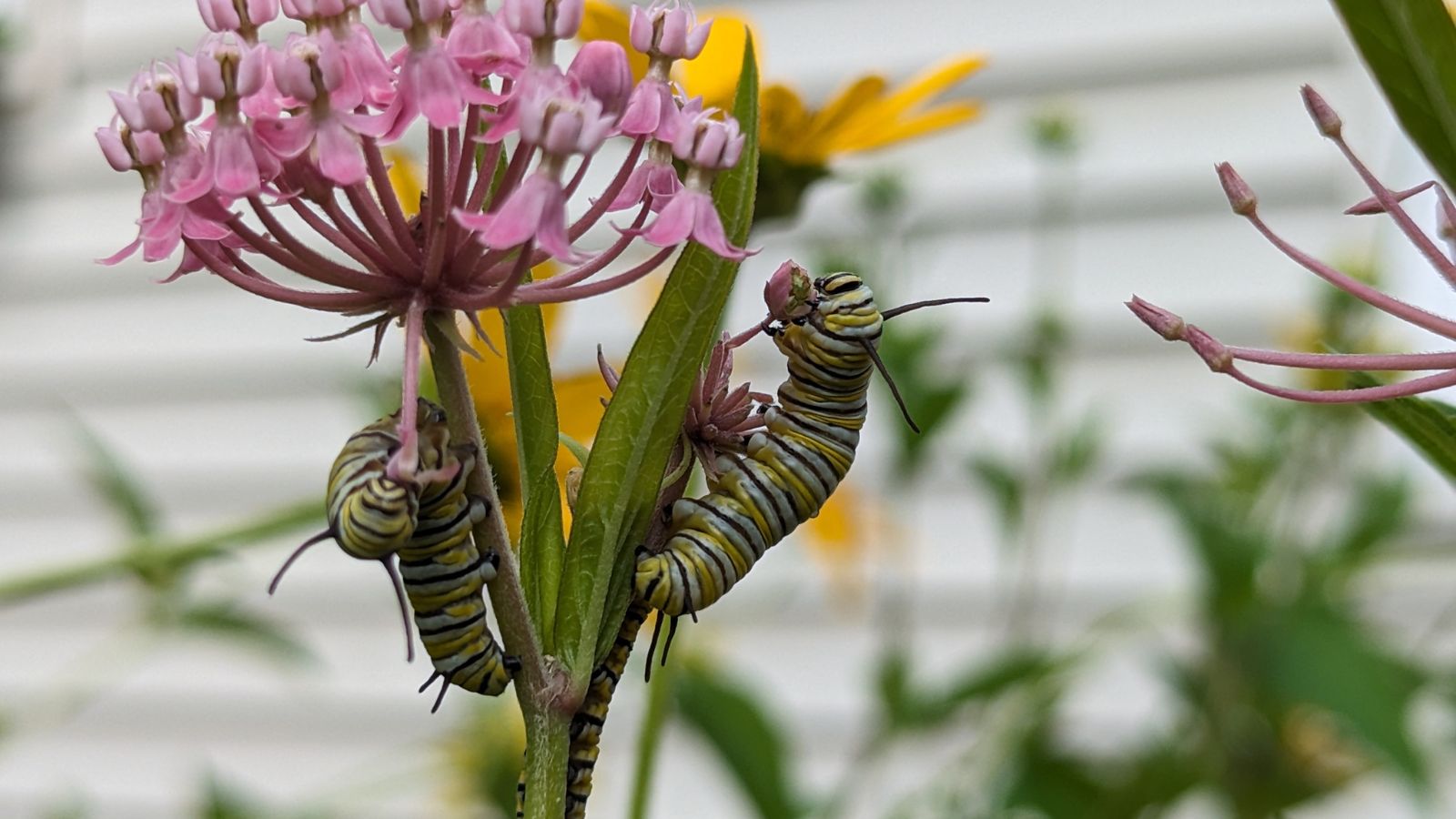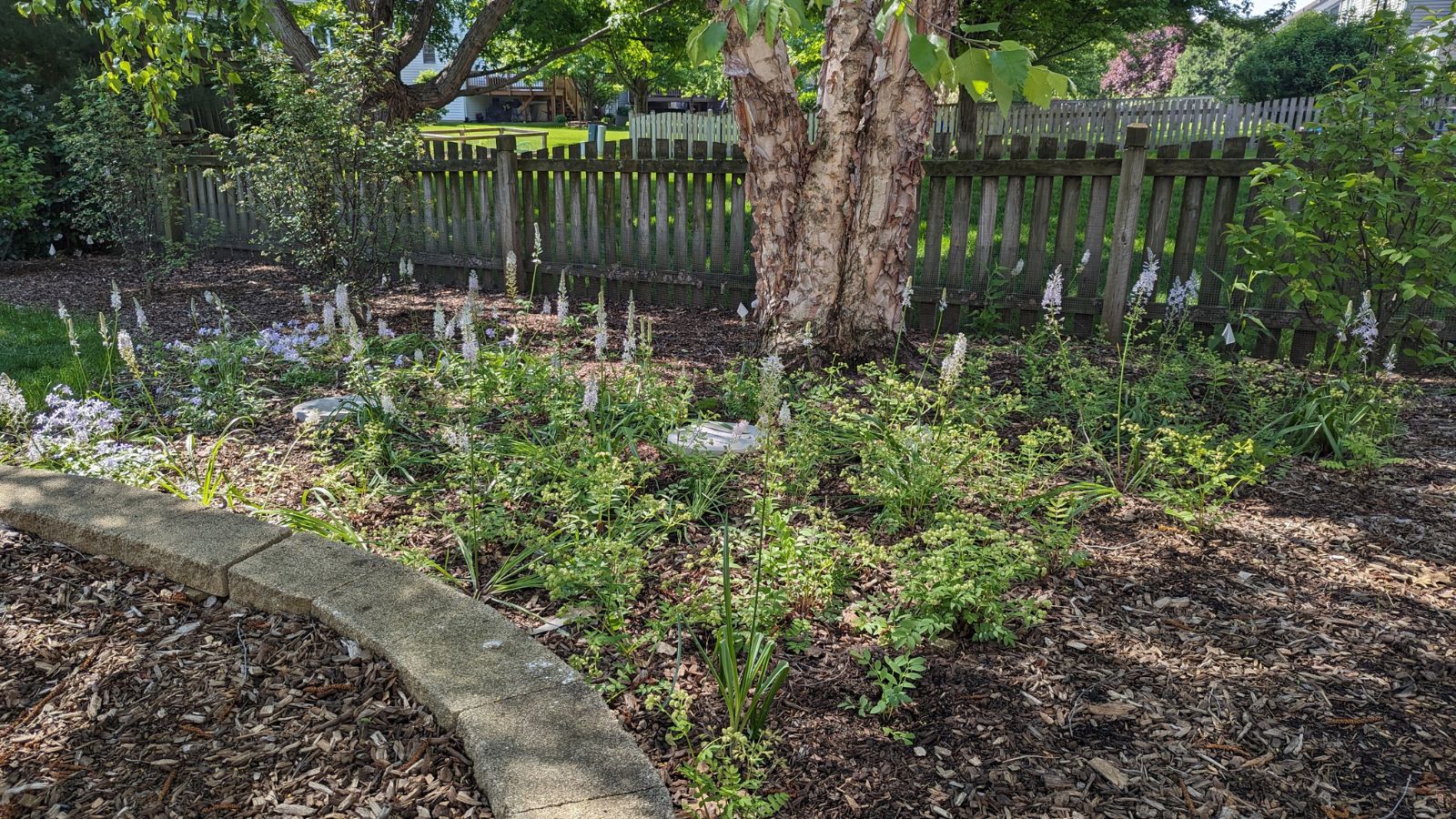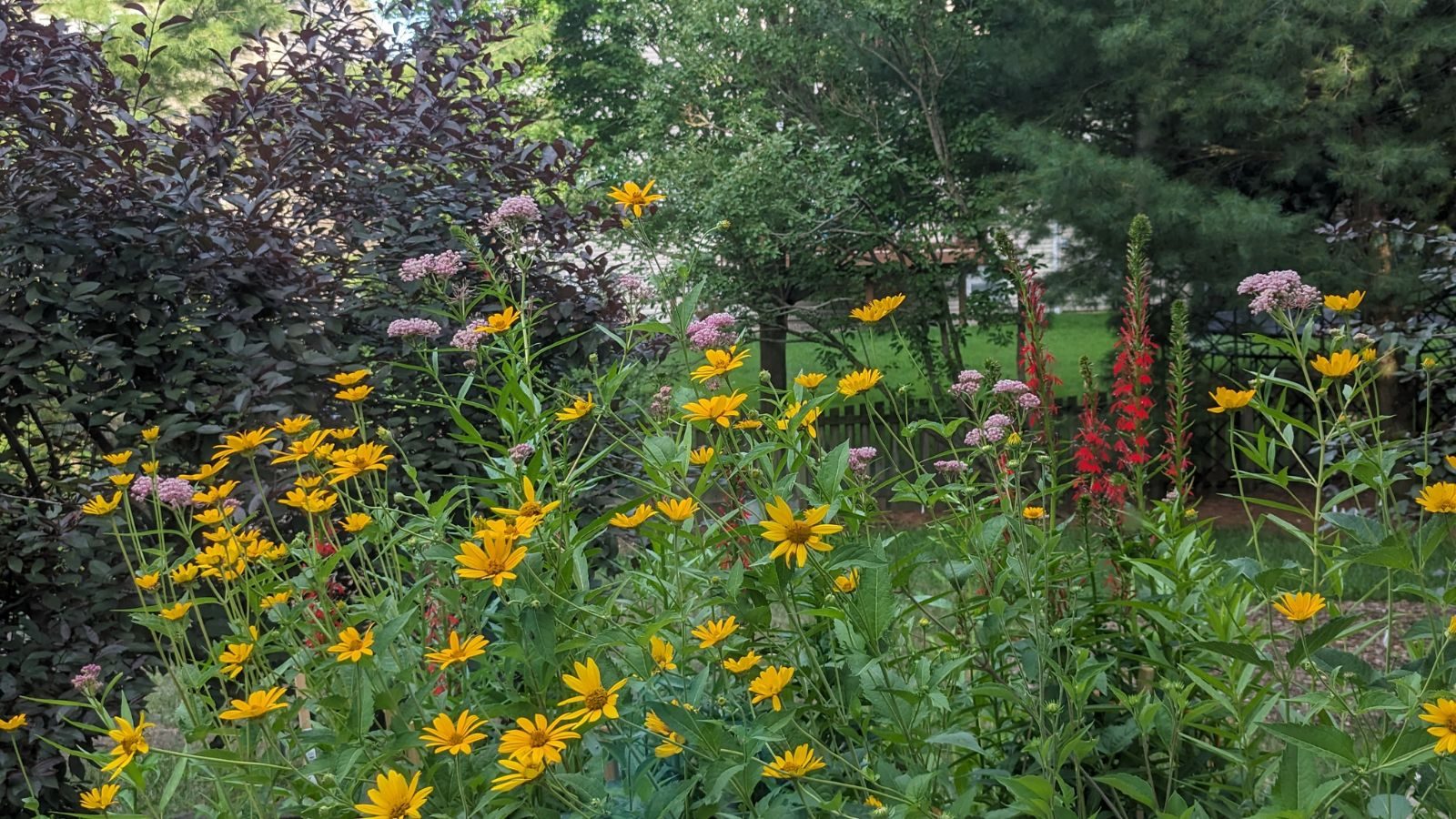Lindsay Keeney
Chief Programs Officer, Conservation and Agriculture
When the Homeowner’s Native Landscaping Act (HNLA) passed in the 2024 spring legislative session, it demonstrated sweeping acceptance of homeowner rights to steward native Illinois gardens on their properties. The law, sponsored by Rep. Laura Faver Dias and Sen. Karina Villa, moved through the General Assembly in one session. IEC and our partners worked to advocate for the bill during Conservation Day at the Capitol and throughout session in Springfield.
Then, Governor Pritzker’s signature at the end of July 2024 marked a giant leap forward in the state’s efforts to expand habitat for native plants and animals. Around the same time, an Illinois homeowner found themself in a struggle for their right to maintain a native garden on their property. Months after the dispute began, we got word that the homeowner had prevailed.

A Native Garden Prevails
Jessica Mino, Kane & Kendall County Program Director with The Conservation Foundation, alerted our team to this issue over email in late July.
“We are working to support a homeowner that is being required by the developer of their subdivision to remove their full front lawn native planting garden (well laid out with a written design),” Mino wrote.
Proactive efforts on the homeowner’s part to reach an agreement with the developer fell through. The homeowner told us, “The developer told us to remove our garden and replace it with sod or they would do it for us and charge us. They said very tersely, ‘We don’t negotiate.'”
“The letter from the developer was very unexpected because all our neighbors walking by as we worked had been excited and complemented our garden. One had even said it reminded him of a botanical garden! Our work on the garden had really made us feel like part of our community for the first time, and many other homes have gardens in our neighborhood though not quite as large. We went all out to get our neighbors on board, including putting in plant labels, edging, mulching, and putting up a sign to a website about our garden that explains why we use native plants and lists what is growing so they can explore. Some of our neighbors were so upset by the developer threatening our garden that they even moved their cars to block easy access from the road so that if the developer sent landscapers, they would have a hard time accessing the garden!”
The homeowners worked with an attorney to smooth out the details of the situation and determine the best path forward. “Our lawyer wrote up a letter that included the Homeowner’s Native Landscaping Act, the Garden Act (which covers pollinator plants), and the county ordinance, which allows native plants.” The whole time, the developer continued its attempts to remove the garden. However, once the letter was sent, the homeowners stopped hearing from the developer.
As for why the developer had control, the homeowner lives in a developer-controlled common interest community. The developer has control via the covenants, conditions, and restrictions for 30 years and their control gets renewed automatically for 25 years at a time. Since we are a common interest community, we were covered under the Homeowner’s Native Landscaping Act, explained the homeowner.

An Empowered Native Plant Movement
What teeth does the HNLA have? The law prevents homeowners associations from restricting residents’ ability to plant native landscapes within their yards, as long as they do not infringe on neighboring properties.
Historically, factors like plant height were used to reject native garden requests. Not anymore. Legislation like the Homeowner’s Native Landscaping Act proves that homeowners are eager for opportunities to get involved in conservation efforts.
“It was easy to feel attacked and discouraged during the process, but what really stood out was how the community came together around us and our native garden,” said the homeowner. “It really gave us an appreciation for how powerful and diverse the native plant movement is. Having a law that supports native plants has made us feel confident in continuing to add to our garden and expand our native plant outreach in our community.”
“We don’t need unnecessary barriers,” said Chris Kessler, policy director at IEC affiliate Openlands, to WTTW in August 2024. “The more that we can make the process more accessible to people, the better. We’re seeing biodiversity loss, the effects of climate change, all these things. People want to do something, and this empowers them.”
Mitigating Climate Change
“During the process, we talked to almost every local organization we could, including county and township officials, our special service area board, and local conservation organizations. All of them supported native plants for reasons ranging from climate change and supporting biodiversity, to water conservation and stormwater remediation, to aesthetics,” the homeowner said.
Openlands emphasizes the important role native plants play in mitigating the effects of climate change. “Planting native plants are one of the most immediate and easiest actions you can take to support wildlife and mitigate the effects of climate change on your property and in our region,” the organization wrote in a blog.
It’s our goal that continued education and advocacy will embolden our decision-makers to prioritize nature-based solutions that mitigate climate change, stop the spread of invasive species, safeguard our water and wetlands, and protect the precious animals and plants that call Illinois home.
Looking for more information on native gardens? The Conservation Foundation just published a special Conservation@Home issue that spotlights local, native landscapes!
About the Author
Lindsay serves as the Chief Programs Officer, Conservation and Agriculture, for the Illinois Environmental Council. Since 2017, she’s led staff on IEC’s conservation, open space, and river issues. At IEC, Lindsay leads the Illinois is Beautiful Coalition, which works to ensure Illinois contributes to the national 30×30 goal in an equitable, community-based, and impactful manner, and the Wetlands Coalition, which aims to reinstate wetlands protections at the state level after devastating federal rollbacks.

